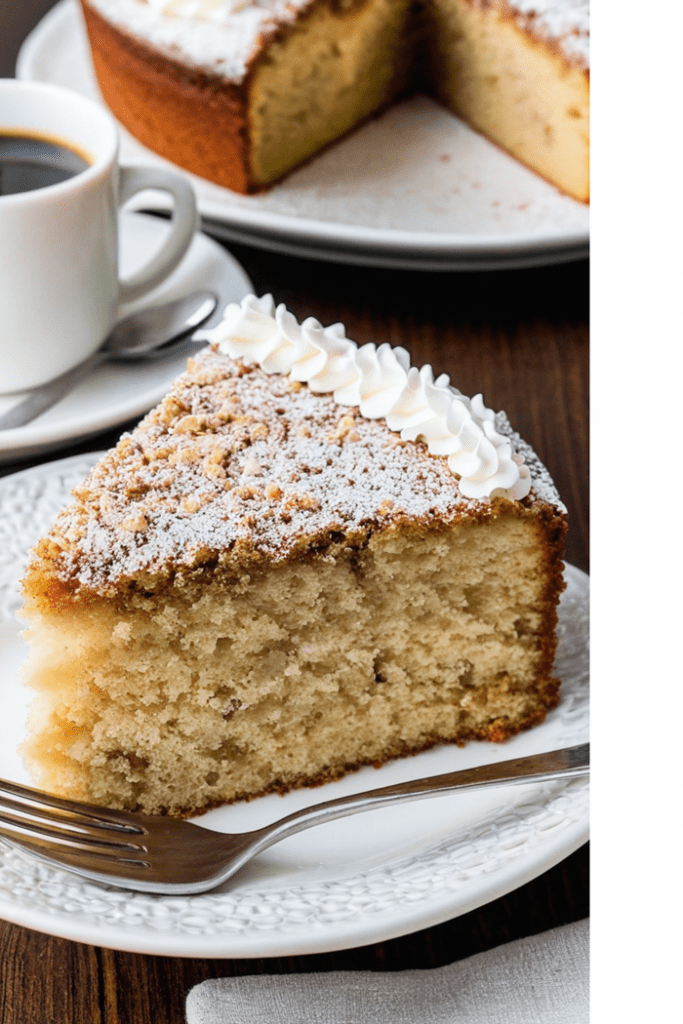Prediabetes is more common than most people think.
Prediabetes is when your blood sugar is higher than normal but not yet diabetes2. And over 80% of people with prediabetes don’t even know they have it because there are no clear signs and not enough tests1.
To stop prediabetes from turning into type 2 diabetes, you need to make healthy changes.
This means eating right, moving more, losing weight, handling stress, sleeping well, and quitting unhealthy habits like smoking1.
The good news is that if you act early, you can greatly lower your chance of getting type 2 diabetes and its problems.
Risk Factors for Developing Prediabetes

Many things can make you more likely to get prediabetes and type 2 diabetes.
Being overweight is a big risk6. If you’re heavy and have other risk factors like not moving much, family diabetes history, certain race, or high blood pressure, check for prediabetes and diabetes7.
Not moving much can make you gain weight and not use insulin well, raising your prediabetes risk6. While eating too much junk food, sugary drinks, and fats can also lead to insulin resistance and prediabetes6.
Your genes can affect your risk of getting prediabetes, especially if diabetes runs in your family6. Getting older, especially after 45, also raises your risk6.
Most people with prediabetes will likely get type 2 diabetes in about 10 years, showing why changing your lifestyle is key7.
Some health issues make you more likely to have prediabetes, including:
- Obstructive sleep apnea
- Fatty liver disease
- Polycystic ovarian syndrome (PCOS)
- Cushing’s syndrome
- Lipodystrophy syndromes
The good news is that making healthy changes like losing 5-7% of your weight and moving more can cut your type 2 diabetes risk by almost 60%.
7 Prediabetes Symptoms You Must Avoid
Prediabetes affects about 96 million adult Americans, with 1 in 3 adults having it8. Yet, 80% of those with prediabetes don’t know they have it8. It often has no symptoms, but knowing the signs can help you manage your health.
So by watching for these signs and making healthy changes, you can keep your blood sugar in check and lower your diabetes risk.

Blurred Vision
Blurred vision can be a sign of prediabetes due to high blood sugar. This can damage the tiny blood vessels in the retina, leading to diabetic retinopathy. If you keep seeing blurry vision, see your doctor for an eye check-up and talk about your prediabetes risk.
Fatigue
Feeling very tired is another sign of prediabetes. Your body can’t turn glucose into energy well when it’s insulin resistant. If you’re always tired, even after sleeping well, check your blood sugar levels.
Frequent Infections
Prediabetes can weaken your immune system, making you more likely to get sick often. If you get sick a lot or don’t bounce back quickly, it might mean you have insulin resistance. A healthy lifestyle and checking your blood sugar can help fight infections.
Frequent Urination
Urinating more than 7 times a day can be a sign of prediabetes9. High blood sugar makes your kidneys work harder to filter out glucose, so you need to pee more. If your bathroom habits change, talk to your doctor and check your blood sugar.
Increased Hunger and Thirst
Prediabetes can make you hungry and thirsty more because your body can’t use glucose well. You might want to eat more or drink more water than usual. Be aware of any big changes in how much you eat or drink and talk to your doctor.
Numbness or Tingling in Feet or Hands
Numbness or tingling in your feet or hands could mean prediabetes. High blood sugar can hurt the nerves over time. If you keep feeling numb or tingly, get medical help and check your blood sugar.
Slow-Healing Sores
Slow-healing cuts or sores can also be a sign of prediabetes. High blood sugar can hurt your circulation and blood vessels, making healing hard. If cuts or sores take a long time to heal, talk to your doctor and check your blood sugar.
Prediabetes often has no clear signs, so regular check-ups are key, especially if you’re over 45, have a family history of diabetes, or are overweight8. Knowing the signs and making healthy changes can help you manage your health. If you notice any of these signs or worry about your blood sugar, don’t hesitate to consult your healthcare provider for advice and support.
Diagnosing Prediabetes: Tests and Procedures
If you think you might have prediabetes, talk to your doctor for a proper check-up. Over 1 in 3 adults in the US has prediabetes, but 90% don’t know they do10. Early tests and checks are key to stop it from turning into type 2 diabetes.

Physical Exam and Blood Tests
Your doctor will look for signs of prediabetes during a physical exam. They might check for signs like a big waist, skin tags, or dark skin patches. They’ll also check your blood pressure and cholesterol levels.
Your doctor will do blood tests to see how your body handles glucose. Tests like the Hemoglobin A1C show if your levels are too high. Levels between 5.7% to 6.4% mean you might have prediabetes1011. The FPG test also checks for prediabetes if your fasting blood sugar is between 100 to 125 mg/dL1011.
Glucose Tolerance Tests
The Oral Glucose Tolerance Test (OGTT) is another way to check for prediabetes. It measures your blood sugar before and after you drink a sweet drink. If your levels are between 140 to 199 mg/dL, you might have prediabetes11.
Hemoglobin A1C Test
The Hemoglobin A1C test, or A1C test, is a common way to check for prediabetes and diabetes. It looks at your average blood sugar over the past two to three months. If your A1C is between 5.7% to 6.4%, you might have prediabetes11.
“Early detection and diagnosis of prediabetes are crucial in preventing the progression to type 2 diabetes. By working closely with your healthcare provider and undergoing the necessary tests and procedures, you can take proactive steps to manage your blood sugar levels and maintain optimal health.”
About 1.2 million people in the UK live with type 2 diabetes but haven’t been diagnosed yet12. Regular check-ups and screenings can help catch prediabetes early. This way, you can stop or delay type 2 diabetes.
Lifestyle Changes to Manage or Reverse Prediabetes
Healthy lifestyle changes are key to managing and reversing prediabetes. Eating well, moving more, losing weight, handling stress, sleeping enough, and quitting smoking can help. These changes can improve your blood sugar control and lower your risk of type 2 diabetes.
Healthy Eating Habits
For prediabetes, eating right is very important. Eat more whole foods, fruits, and veggies. Cut down on sugary and processed foods. Eating veggies is good because they help control your blood sugar13.
Carbs come in simple, refined, and complex types, each affecting blood sugar differently13. Reading labels and eating less sugar are key to managing your blood sugar14.
Increasing Physical Activity
Exercise is key in reversing prediabetes13. Aim for 150 minutes of moderate exercise each week14. Start with easy activities and move to harder ones as you get fitter. Exercise makes your body better at controlling blood sugar.
Losing Weight
Weight loss is crucial to avoid Type 2 diabetes14. Aim to lose 5-7 percent of your body weight13. Studies show losing this weight and exercising can cut your risk of Type 2 diabetes by up to 58%14.
Managing Stress
Stress can make insulin resistance and high blood sugar worse. Try meditation, deep breathing, or yoga to reduce stress and boost your health.
Getting Enough Sleep
Good sleep is vital for insulin and blood sugar control. Try to get at least 7 hours of quality sleep each night. Bad sleep can mess with hormone levels and make insulin resistance worse.
Quitting Smoking
Smoking raises your risk of type 2 diabetes and makes insulin resistance worse. Quitting can help your body control blood sugar better and lower your diabetes risk. Get help from your doctor or a quit program to stop smoking.
By making these lifestyle changes, you can manage or reverse prediabetes. Working with a healthcare provider is best for tracking and managing prediabetes13. Small steps can make a big difference in your health and lower your risk of type 2 diabetes.
The Importance of Early Detection and Prevention
Finding prediabetes early is key to stopping it from turning into type 2 diabetes and avoiding serious health problems. Studies say 5% to 15% of people with prediabetes will get diabetes every year15. But, making healthy lifestyle changes can lower this risk for up to 10 years15.
Prediabetes can cause big health issues like heart disease and stroke15. It’s vital to spot the risk factors and signs of prediabetes early. People over 45, those with a BMI over 25, and those with a big waist size are at higher risk15.

Some groups like African American, Asian American, Hispanic, Alaska Native, Pacific Islander, and Native American are more likely to get prediabetes15. It’s crucial to screen and detect early in these groups.
By focusing on prevention, you can lower your risk of type 2 diabetes. This means eating better, exercising, managing your weight, and handling stress15. Losing just 2.2 lbs. can help lower your risk of getting type 2 diabetes15.
The start of Non-Insulin-Dependent Diabetes Mellitus (NIDDM) is 4–7 years before it’s officially found16. This shows why catching it early and preventing it is so important to avoid serious problems later.
Regular check-ups and tests are key to finding prediabetes early. The U.S. Preventive Services Task Force says to screen for abnormal blood sugar and type 2 diabetes16. Catching prediabetes early lets you take steps to keep your health in check and stop type 2 diabetes.
Knowing your risk factors, spotting symptoms, and getting regular tests can help you manage your health. Early detection and prevention are vital for keeping well and avoiding serious problems later.
When to Consult a Doctor
If you notice symptoms of prediabetes or have risk factors, see a doctor. Over 80% of people with prediabetes in the U.S. don’t know they have it17. Regular check-ups and screenings are key to catching it early. This is especially true if you have a family history of type 2 diabetes, as you’re at higher risk18.
Discussing Symptoms with Your Healthcare Provider
Talk to your healthcare provider about any symptoms like blurred vision, feeling very tired, or slow-healing cuts. They’ll look at your risk factors too, like being overweight or not moving much18. Men are more likely to get prediabetes than women, so share your risk with your doctor17.
Regular Check-Ups and Screenings
Regular check-ups and tests are vital for finding prediabetes early. It often shows no signs. Your doctor might do tests such as:
- Fasting blood sugar test (normal range: less than 100 mg/dL; prediabetes range: 100-125 mg/dL)17
- Oral glucose tolerance test (normal range: under 140 mg/dL; prediabetes range: 140-199 mg/dL)17
- Hemoglobin A1C test (normal range: 5.6% or less; prediabetes range: 5.7%-6.4%)1718,
Kids over 10 should get tested if they’re at risk, like being overweight or having a family history of diabetes17. Regular check-ups help catch prediabetes early. This way, you and your doctor can work together to manage or reverse it.
Early detection and action are crucial to stop prediabetes from turning into type 2 diabetes. By seeing a doctor and talking about your symptoms and risks, you can take charge of your health. This can lower your risk of serious diabetes-related problems.
Changing your lifestyle to eat better, move more, and handle stress can reverse prediabetes18. The DPP Lifestyle Change Program showed a 58% drop in type 2 diabetes risk after 3 years for those who lost 7% of their weight through diet and exercise18. With your doctor’s help and a healthier lifestyle, you can manage or even reverse prediabetes.
Conclusion
Prediabetes is a serious health issue that affects many people around the world. It’s expected to affect 7-8% of adults by 2045, which means about 587 million people19. Most people with prediabetes don’t know they have it. This puts them at higher risk for heart disease, stroke, and type 2 diabetes20.
But, up to 50% of type 2 diabetes cases can be prevented or delayed with the right support12. Making healthy lifestyle changes, like eating right, staying active, and losing weight, can cut the risk of type 2 diabetes by half12.
It’s key to act early if you think you might have prediabetes or are at risk. Eating well, exercising regularly, and keeping a healthy weight can lower your risk of getting prediabetes and its problems19. Just losing 5% of your body weight can make a big difference in preventing type 2 diabetes12.
If you think you might have prediabetes or are at risk, talk to your doctor. They can do tests like the fasting blood sugar test, oral glucose tolerance test, and hemoglobin A1c test to check for it19. With early detection and the right management, you can control your health and lower your risk of type 2 diabetes and other serious health issues.
FAQ
What is prediabetes?
Prediabetes means your blood sugar is higher than normal but not high enough for type 2 diabetes. It warns you might get type 2 diabetes if you don’t change your lifestyle.
What causes insulin resistance?
Insulin resistance happens when your cells don’t react well to insulin. This hormone controls blood sugar levels. It can come from being overweight, not moving enough, or your genes.
What are the risk factors for developing prediabetes?
Being overweight or obese, having a family history of type 2 diabetes, and being over 45 increase your risk. Other risks include smoking, certain medicines, and being African, Latino, Native, or Asian American.
What are the symptoms of prediabetes?
Prediabetes often has no clear signs. But, watch for blurred vision, feeling very tired, getting sick often, needing to pee more, feeling hungry or thirsty, numbness in your feet or hands, and sores that don’t heal.
How is prediabetes diagnosed?
Doctors use blood tests to check your glucose levels. These tests include fasting blood sugar, oral glucose tolerance test, and hemoglobin A1C test.
Can prediabetes be reversed?
Yes, you can reverse prediabetes with healthy habits. This means eating right, moving more, losing weight, managing stress, sleeping well, and quitting smoking. These changes can make your body more sensitive to insulin and lower blood sugar.
Why is early detection of prediabetes important?
Catching prediabetes early is key. It lets you make changes to stop it from turning into type 2 diabetes. This can also prevent serious health problems like heart disease, stroke, and kidney disease.
When should I consult a doctor about prediabetes?
See a doctor if you notice symptoms or have risk factors for prediabetes. Regular check-ups help catch it early. Most people with prediabetes don’t know they have it.
Source Links
- https://www.lutheranhospital.com/health-library/399
- https://www.carearc.org/latest-news-posts/10-early-warning-signs-of-prediabetes-you-shouldnt-ignore
- https://www.mayoclinic.org/diseases-conditions/prediabetes/symptoms-causes/syc-20355278
- https://www.nebraskamed.com/diabetes/the-difference-between-insulin-resistance-and-prediabetes
- https://www.webmd.com/diabetes/insulin-resistance-syndrome
- https://www.charlescountyhealth.org/understanding-prediabetes-risk-factors-symptoms-and-prevention-strategies/
- https://health.ucdavis.edu/blog/cultivating-health/prediabetes-risk-factors-testing-and-why-most-dont-know-they-have-it/2022/11
- https://blog.bonsecours.com/healthy/prediabetes-risk-factors-warning-signs/
- https://rosewellness.com/warning-signs-of-prediabetes/
- https://www.pfizer.com/news/articles/can_you_have_prediabetes_and_not_know_it
- https://diabetes.org/about-diabetes/diagnosis
- https://www.diabetes.org.uk/diabetes-the-basics/types-of-diabetes/type-2/prediabetes
- https://intermountainhealthcare.org/blogs/5-lifestyle-changes-help-reverse-prediabetes
- https://health.clevelandclinic.org/how-to-reverse-prediabetes
- https://www.healthline.com/health/type-2-diabetes/what-is-prediabetes
- https://www.ncbi.nlm.nih.gov/pmc/articles/PMC10227840/
- https://www.webmd.com/diabetes/what-is-prediabetes
- https://www.medicalnewstoday.com/articles/311240
- https://www.metropolisindia.com/blog/preventive-healthcare/understanding-prediabetes-the-borderline-zone-of-diabetes-risk
- https://redcliffelabs.com/myhealth/diabetes/prediabetes-all-you-need-to-know-about-it/





















